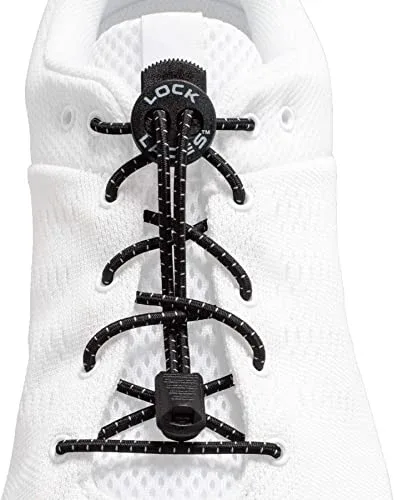If you’re a triathlete looking to save time and improve your performance during race day transitions, elastic laces may be the perfect solution. Elastic laces are designed to be easy to use and adjust, allowing for quick and seamless transitions between the swim, bike, and run legs of a triathlon. In this comprehensive guide, we’ll show you how to choose the right elastic laces, how to properly lace your shoes, and how to make the most of this innovative technology.
Introduction to Elastic Laces
Elastic laces are a type of shoelace that use stretchable materials like rubber or silicone to provide a secure and comfortable fit without the need for tying or untying. They are a popular choice for triathletes because they can save valuable time during race day transitions and help prevent foot injuries like blisters and hotspots. Some of the benefits of using elastic laces for triathlon include:
- Faster transitions: Elastic laces can be easily adjusted and secured with a simple toggle or clip, making it easy to slip in and out of your shoes during transitions.
- Improved comfort: Elastic laces can provide a more comfortable and flexible fit compared to traditional laces, reducing the risk of foot injuries and discomfort during long races.
- Enhanced performance: By saving time during transitions and reducing the risk of injury, elastic laces can help you perform at your best and achieve your goals.
When choosing elastic laces for triathlon, it’s important to consider factors like material, length, and adjustability. Some common types of elastic laces include bungee laces, no-tie laces, and traditional elastic laces. Look for laces that are easy to adjust and that provide a secure and comfortable fit.
Our Recommendation

When choosing elastic laces for triathlon, it’s important to consider factors like material, length, and adjustability. Some common types of elastic laces include bungee laces, no-tie laces, and traditional elastic laces. I recommond Lock Laces to everyone I meet. With 6900 ratings (4.7 out of 5 avarage) on Amazon it’s the safe bet!
How to Properly Lace Your Shoes with Elastic Laces
Once you’ve chosen the right elastic laces for your needs, it’s important to know how to properly lace your shoes for optimal performance and comfort. Here are the basic steps to follow:
- Remove the traditional laces from your shoes and prepare them for elastic laces.
- Insert the elastic laces into your shoes, making sure that they are evenly distributed and centered.
- Lace your shoes using the technique that works best for you, such as a criss-cross or straight lacing pattern.
- Secure the elastic laces with the toggle or clip provided, making sure that they are snug but not too tight.
- Adjust the tension of the elastic laces as needed to achieve a secure and comfortable fit.
To get the most out of your elastic laces, it’s important to practice using them during training and to make adjustments as needed based on your preferences and race conditions.
How to Make the Most of Elastic Laces in Triathlon
Using elastic laces can be a game-changer during race day transitions, but it’s important to know how to use them effectively for each leg of the race. Here are some tips to help you maximize the benefits of elastic laces in triathlon:
- Swim to bike transition: Consider using a “flying mount” technique to quickly jump on your bike and slip your feet into your shoes using the elastic laces.
- Bike to run transition: Practice a “flying dismount” to quickly get off your bike and slip into your running shoes using the elastic laces.
- Training and race day: Practice using elastic laces during your training sessions to get used to the feel and to fine-tune your technique.
Maintenance and Troubleshooting for Elastic Laces
Elastic laces can accumulate dirt, sweat, and bacteria over time, which can lead to odor and deterioration. In this section, we’ll cover how to properly clean your elastic laces, as well as tips for storage and maintenance.
Even with proper care, elastic laces may encounter issues such as slipping, frayed ends, or becoming too loose or too tight. This section will cover common problems that may arise when using elastic laces, and how to troubleshoot and fix them.
While elastic laces can provide a durable and long-lasting alternative to traditional laces, they don’t last forever. This section will cover signs to look out for when it’s time to replace your elastic laces, and how often you should do so.
